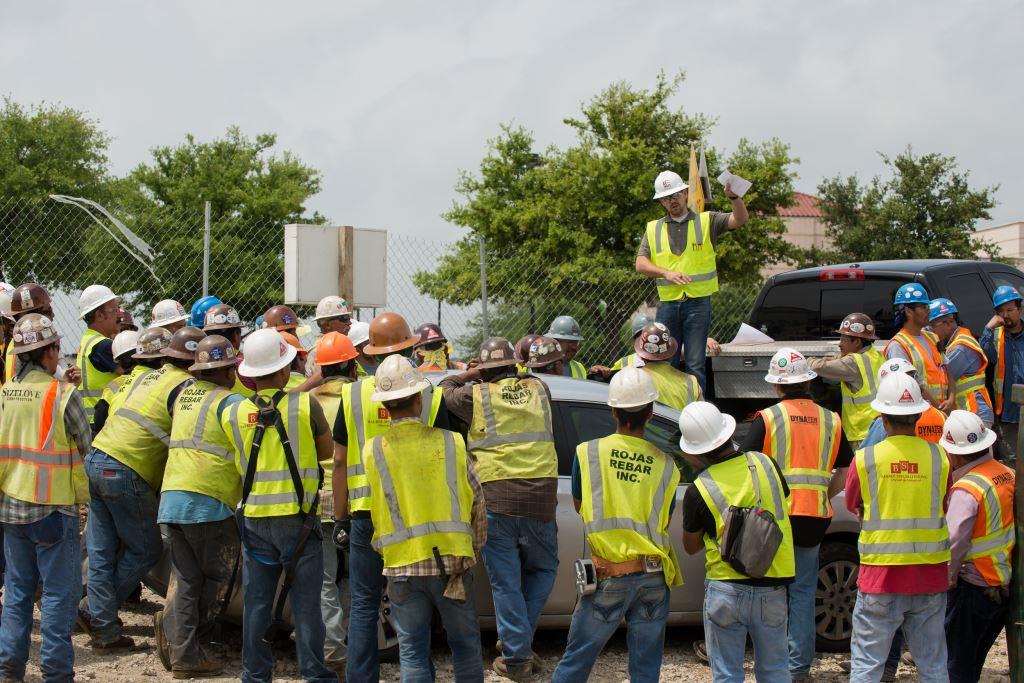| |
6154
0
Construction Safety: The 7 Critical Components of a Crisis Management Plan

Ensuring construction safety is challenging on the best of days since construction sites involve height, excavation, heavy-duty equipment, power tools, noise, and dust. As such, the construction industry faces a greater risk of accidents and disasters. These disasters can be life-threatening and could impact employees, suppliers, customers, the general public, and also the company’s reputation. Unfortunately, unforeseen disasters can hit at any time.
While the threat is real, construction companies still lag behind in implementing effective construction safety systems. But a proper Crisis Management Plan can help save you from this trouble.
Here are 7 critical steps for creating a Crisis Management Plan.
1. Identify the Risk
Identify the major and minor risks that your employees face based on the nature of the project being undertaken, geographical area and topography, equipment being used, and the expertise level of employees.
You can also do scenario planning to understand how one hazard may lead to cause another. For example: if your company works with heavy electrical equipment, a single wire burn can cause the whole electrical system to catch on fire and burn down the area.
You must also be aware of the nature of operations of facilities surrounding your job site. For example, if a neighboring company is a chemical manufacturing company, a chemical blast might affect your company’s operations and team safety as well.
2. Assemble a Response Team
A centralized authority, which can give a clear direction to follow, should be appointed to oversee safety. The safety leader should then assemble a separate team for crisis management. The leader should then assign specific duties and set expectations for each member of the team. This helps ensure everyone is on the same page should a crisis strike. Each member should receive crisis-specific training as applicable for their responsibilities.
A backup plan should also be created to fill in responsibility gaps in case any team member is unavailable when needed. All substitute team members should be trained to step in.
3. Define Communication Channels
The team must decide on how they will communicate with each other as well as with all impacted employees and vendors on the job site. Communication channels include alarms and siren systems, email and/or text notifications, and phone calls. A new smarter option is the Smart Safety app.
4. Conduct Training
There are three components to consider when it comes to training.
SHE Training
When employees join any type of construction work or project, they must receive safety training. Some companies give SHE – Safety, Health and Environment training to their new hires. There are various published resources by Occupational Safety and Health Administration (OSHA) which can be a good start for an orientation session. Apart from this, safety rules should be strictly enforced within the site area and every worker must follow them.
Crisis-Specific Training
As discussed above, certain team members should be trained specifically to handle situations tied to their responsibilities. For example, a team member in charge of making sure workers are accounted at the designated meet-up point should receive basic first aid training to treat minor injuries. The person tapped to speak to media should receive communications training to ensure that agreed-upon messages are conveyed with confidence.
Mock Drills
You’ve probably practiced fire drills multiple times. In the same way, employees in the construction industry should go through various mock drill sessions.
Fire, emergency and disaster management drills should be a regular occurrence within the site area to ensure the safety of life and property. Drills should also be customized per job site. Moreover, drill plans should be reviewed and revised more than once every year to keep procedures up-to-date. These training measures can be time-consuming, but the alternative can be worse.
5. Stay Up-to-Date
The world is changing quickly. New methods, equipment, and processes are constantly overtaking older ones. Your risks, communication channels, and practice methodology can quickly become outdated. As such, your crisis management plan will need revising. You should also keep an eye on new innovations and systems that can be implemented to help better avoid hazards and potential crisis situations.
6. Properly Document all Incidents
If a disaster does happen, do not hide it. Transparency can help save your company’s image. Proper documentation of the date, time, incident, the work that was being done, the employees who were working, safety measures that were taken and how the emergency situation was handled, should be documented in detail. If possible, take and record interviews of employees who witnessed the incident.
Depending on the severity of the incident, a press release should be released, and the top management team should also express their concern in the matter. This helps present a united front while emphasizing that their employees and their safety are the first priority. Changes in the Crisis Management Plans that can reduce the chances of such an incident in the future can also be disclosed.
7. Manage Public Relations
In this digital age, the potential for damage increases if negative comments about the company start spreading on social media platforms. Public Relations can save help protect against this by proactively updating the media and public about the matter. The PR manager or designated company spokesperson should highlight the safety measures that the company had taken to avoid such incidences. They should share facts on news and social media. Empathize with employees who got affected.
Disasters are unexpected, but it’s up to companies in the construction sector to minimize the risk. It will require time, resources, and effort. However, not having a plan in place is not an option. By making a crisis management plan, you reduce the chances of such incidents taking a toll on human life and company property.